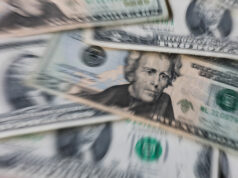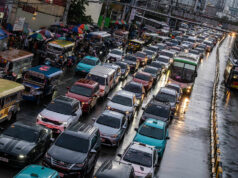We grew up with Ocean Park and Victoria Peak, dim sum and roast duck. And now, there are images of burning and videos of violence in the streets of Hong Kong. How do we make sense of it?
The nature of protest and the right of assembly. The protests started in August 2019 against an extradition bill. In any society, democratic or not, every citizen has the right to voice out and to criticize except that in authoritarian states, it can get you killed. As five months of continuing protests demonstrate, democracy exists in the city.
Protestors say that their civil liberties are slowly being curtailed; civil action is needed. The curtailment of basic freedoms by governments who refuse to listen justifies protest. These days it means social media posts and mass assemblies. Each citizen has the duty to stand their ground against bad government.
It also the duty of the citizenry to make sure that only peaceful means are employed. Violence is not an option. For example, workers can walk out of their officers or stations at appointed times or even for days. We are familiar with strikes. It is a recognized tool to put pressure on management, i.e. government. Protestors can also cause inconveniences, gathering at junctions or marching through districts.
Governments ought to allow such protests as part of the democratic space and ensure peace and order as is their primary function. There need not be permits if carried out at open spaces that allow for crowds. If the areas are for general use of commerce or residence, certain restrictions may be necessary to keep the peace for those who don’t support or are against the protests.
On the limits of mass actions, peaceful means versus violence. All actors in the mass actions that cause disruption are making sacrifices and each segment is suffering a loss in the hope of a gain, i.e. more freedom for the protestors, stability and order for the state.
In Hong Kong, what we see are attacks on government offices. Breaking of doors and windows, burning stuff, or any act that causes damage is not part of allowable protest action. The criminal code punishes such violence. Destroying property of companies that are linked to China in a campaign against all things China, or any random act of destruction is against the law. In the alternative, a campaign to boycott these companies, their products and services can be undertaken.
When protestors invade public utilities like airports and subway stations, it is beyond inconvenience. The intention and effect is to disrupt and subvert the normal functioning of the community. The public use of transit service that supports other’s right to employment and the right to enjoy one’s space is affected. Then the state, usually through the police force, steps in to clear the protests. This meets the clear and present danger standard that is recognized in many jurisdictions.
There are confrontations that can be diffused by dialogue and communication. But if the confrontation is overpowered by shouting and overt action, then violence escalates to which the state is justified to use reasonable force to first, to protect itself, and second, to ensure security of the society as a bedrock of constitutional principle.
On unarmed protestors versus policemen with guns. At confrontations, police these days use non-lethal means like water cannons to disperse crowds or mobs. If the protestors are not passive but active, i.e. throwing projectiles, police action will include tear gas in general and pepper spray or tasers in particular.
When protestors hurl bricks and petrol bombs, shoot laser lights, to attack the police and use umbrellas and barricades as defense, from the criminal justice perspective these persons are armed. Armed need not be firearms or guns. A steel bar, a metal can, or any object can serve as a weapon. In these instances, policemen, specially those outnumbered, have the right to, at the minimum, take out their service firearm for self-defense. Police protocol may require shooting in the air as warning shots.
In these five months, we see the Hong Kong police force being shouted at and taunted, chased and harassed, attacked repeatedly. It is to the policemen’s credit that the line held and discipline is steady. No unexplainable killings mar the police operations. Contrast this with the Philippines with thousands killed, period. Maybe the ghost of the Tiananmen incident haunts the leadership. No one wants to have blood on their hands in the freest city in Asia in the age of information.
On the actions of armed protestors. The protestors hooded in black, masked in black, and carrying black backpacks are not identifiable. In an ordinary setting, say a mall, if anyone would be dressed like this, mallgoers will be alarmed and security measures activated. In Hong Kong’s case, they not only taunt police but close in groups on isolated policemen. When one sees a policeman with a firearm, the reaction is to stay still and raise your hands. Steadily approaching a policeman with a gun in his hand is provocation. Given the situation, the policeman can cite self-defense.
My next article will outline the solutions to the Hong Kong riots from the rule of law approach using a criminal justice lens.



